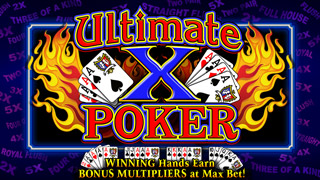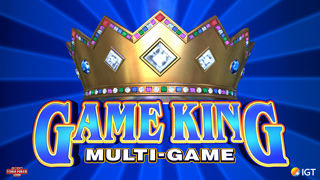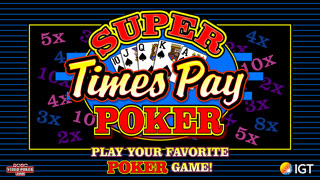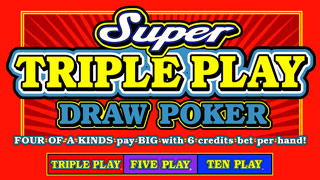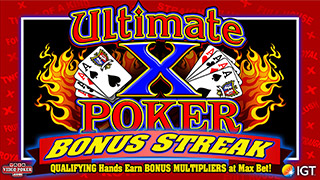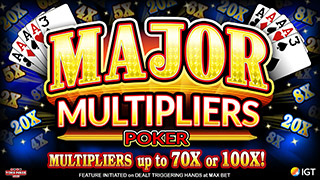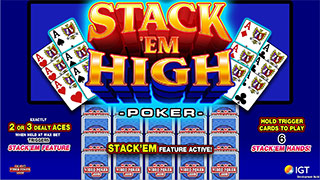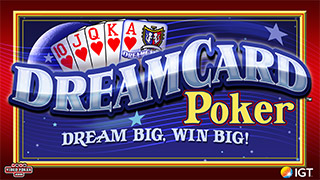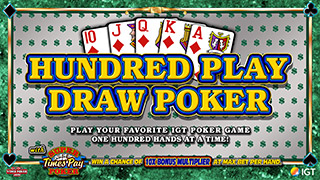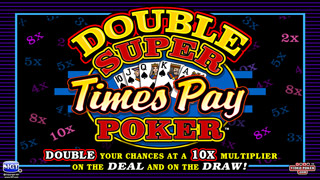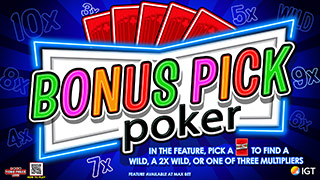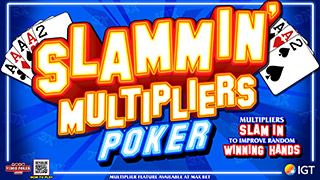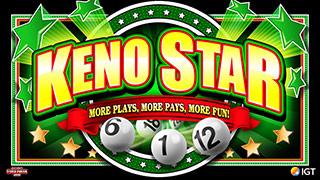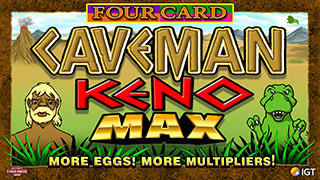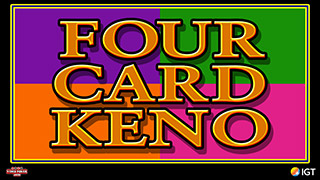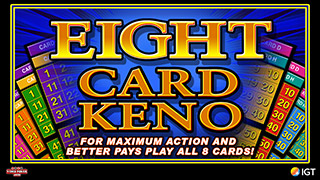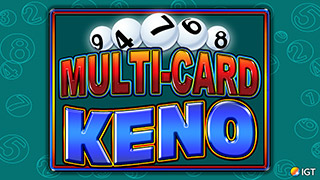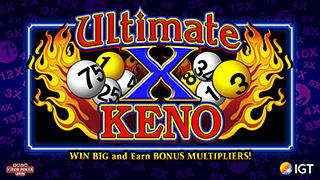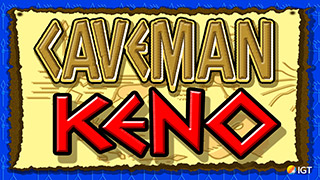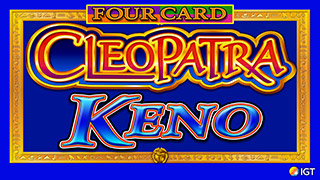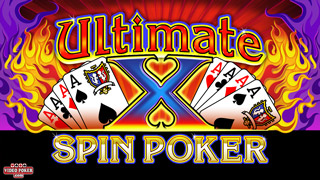Talk to me about DDB...
-
shadowman
- Video Poker Master
- Posts: 3587
- Joined: Mon Oct 23, 2006 5:42 pm
Re: Talk to me about DDB...
How can people afford? Because alot of people who think that they are playing with an edge are just in denial and fooling themselves. If the special hands arent hit within any game after a certain amount of time, then the BKRL would fall far enough to a negative amount that catching up would be near impossible. EX= A guy plays Quarters, gets down 8000 credits with no royal, now what? Keep playing past -8000 credits, towards -9000, then say he does hit 2rfs for 8000, still down 1000+ or however long it takes. Im speaking reality here. Its gambling. I understand the math and I know where a player would reason with these numbers as to there proof. The problem is RNG. This means that the return is variable and therefore Random. Some people will win, Most will lose. I dont care how disciplined a player is. This is my opinion, in no way personally directed at any individual..........Ive been riding this roller coaster for years. Best pay tables,comps, and strategy are obviously the only way to play this game to increase your chances. Disc...........Im not a professional.
Most gamblers that understand the advantage of a big edge also understand the need for a good bankroll. This means at least 3-5 RFs for low variance games and even higher for high variance. They would not play with a bankroll of only 8000 credits. Still doesn't mean they can't go bankrupt but the odds are very low. As they play with the big edge the bankroll will grow reducing the chances even further of losing it all.
Most gamblers that understand the advantage of a big edge also understand the need for a good bankroll. This means at least 3-5 RFs for low variance games and even higher for high variance. They would not play with a bankroll of only 8000 credits. Still doesn't mean they can't go bankrupt but the odds are very low. As they play with the big edge the bankroll will grow reducing the chances even further of losing it all.
-
brmcc74
- Senior Member
- Posts: 295
- Joined: Wed Dec 30, 2009 7:19 pm
It just doesnt make sense. After several or numerous negative sessions with no big hits, how could a player actually "catch up"? Say a guy goes 6 months with no good hits and plays 2-3 times per week. I mean how many RF do people acutually hit? If you ask most people, they will tell you that they dont come around enough. So what I guess you are saying is that no matter how far you get down, if you have the BKRL to keep chasing, then you will eventually catch or break even. I dont buy it. That type of thinking reminds me of the martingale system.
Heres what I have been thinking lately....................If a pay table is scheduled at say 9/6 JOB, then this = 99.54%. Since the game is based on an independant RNG then how can we really put a % on a game? We dont know what the next hand or millionth hand will be due to the RNG. If it were based on an average math system then fine, I understand that. Average meaning that there will be swings in both directions and a very few will find theirselves in the black. I dont understand how while we Know that the RNG is Unpredictable, how can we put a assumed amount on it. I would say Probable more likely....but no guarantees. I think that if any player finds themselves always in the black longterm, then they are not only skilled but lucky as well. How hard would it be to come back from -20000 credits?
Heres what I have been thinking lately....................If a pay table is scheduled at say 9/6 JOB, then this = 99.54%. Since the game is based on an independant RNG then how can we really put a % on a game? We dont know what the next hand or millionth hand will be due to the RNG. If it were based on an average math system then fine, I understand that. Average meaning that there will be swings in both directions and a very few will find theirselves in the black. I dont understand how while we Know that the RNG is Unpredictable, how can we put a assumed amount on it. I would say Probable more likely....but no guarantees. I think that if any player finds themselves always in the black longterm, then they are not only skilled but lucky as well. How hard would it be to come back from -20000 credits?
-
shadowman
- Video Poker Master
- Posts: 3587
- Joined: Mon Oct 23, 2006 5:42 pm
I don't think anyone has said that 9/6 JOB is a big edge. In fact, it is a negative game and will result in losses for the majority of people that play the game. You ignored the central point in my comment above that a big edge is key to winning over time. That means 1% or more with the emphasis on "more".
BTW, I know an individual that just had 10 RFs over a two week period playing single line VP. So, while this is unusual it does happen.
Your comments about an RNG are typical. You understand that big hands are not hit often but you fail to understand that this is accounted for in the return of games. You don't have to hit them often to get close to the ER of the games. The math accounts for this by giving every single possible hand an equal chance of occurring. This is how randomness works. Results have a probability of occurring based on the number of times they show up given the equality of any cards chances of appearing. There's nothing magic in the calculations.
BTW, I know an individual that just had 10 RFs over a two week period playing single line VP. So, while this is unusual it does happen.
Your comments about an RNG are typical. You understand that big hands are not hit often but you fail to understand that this is accounted for in the return of games. You don't have to hit them often to get close to the ER of the games. The math accounts for this by giving every single possible hand an equal chance of occurring. This is how randomness works. Results have a probability of occurring based on the number of times they show up given the equality of any cards chances of appearing. There's nothing magic in the calculations.
-
brmcc74
- Senior Member
- Posts: 295
- Joined: Wed Dec 30, 2009 7:19 pm
The 99.54 example was used to suggest that just because you play the particular game and paytable, doesnt mean that you will achieve the results. If you play this game and follow the rules, will you only be down -.46% Guaranteed? Not that it would be a desirable game, although maybe the easiest to master. 10 RFS in 2 weeks, Thats just my point. I honestly believe that there swings that will go up but they will crash back down in time. Im saying though that not just anyone can achieve these results. 10 royals in that period= one lucky player lets face it. When I play , Im hoping for a good session with some luck and my skill inbetween garbage hands, best tables are obvious. So I guess Im not doing things different than most people who pattern their game based on strategy and math. Im just not sold on the long term issue.
-
spxChrome
- VP Veteran
- Posts: 819
- Joined: Tue Nov 07, 2006 9:21 pm
Why does the bankroll matter if you are a long term player? You are just going to come back. That is why I said early on we are all short-term players compared to the lifecycle of the machine. We play sessions at a time. I'm not gonna argue the math but there are way to many more variables involved just to hang your hat on that one single arguement. I'm with brmcc, you can go for 8 small to medium winning trips and loose it all in 1 bad session.
-
Vol
- Forum Rookie
- Posts: 48
- Joined: Tue Jan 13, 2009 11:39 pm
Here is another way to look at the difference between DDB and a lower variance game,
Suppose that, as a casual player, I play 400 hands of 9/6 DDB, i.e. a couple of hours in a casino The expected return for long play is 0.990. Supose that I get the expected number of FH's and lower but no 4oak's or SF's. My return will be about 0.777. For a $1 coin, I put in $2000 and lose $445. One 4oak 5-K will reduce this to $195.
For 9/6 JoB,a lower variance game, the numbers are 0.995, 0.911, and $180 lost. I could play nearly 1000 hands before losing $445. One 4oak ($125) reduces the $180 loss to $55 allowing many more hands.
Another choice, though not always available, is Bonus Poker Deluxe (BPD) in which all 4oak's pay $400. The numbers are about the same as for DDB, but if I get any 4oak, the loss is only about $45. BTW, the weighted average payment for 4oak's in DDB is $400. So you are not giving up the $2000 payoffs, just collecting them in $150 increments.
If I became more serious, I could play more hands, say 40,000, put $200,000 coin in, and perhaps get the Royal and achieve the expected return. Then what's the outcome? With DDB, I Iose $2000 and with JoB I lose $1000.
These are the statistics. What is the strategy? Is there a minimum number of hands that one should be prepared to play each casino visit? Is BPD a clear choice over DDB? Is JoB a better choice to get the extra hands? Does a marathon number of hands attempting to get the Royal ever make sense for a game with a house edge?
Vol
Suppose that, as a casual player, I play 400 hands of 9/6 DDB, i.e. a couple of hours in a casino The expected return for long play is 0.990. Supose that I get the expected number of FH's and lower but no 4oak's or SF's. My return will be about 0.777. For a $1 coin, I put in $2000 and lose $445. One 4oak 5-K will reduce this to $195.
For 9/6 JoB,a lower variance game, the numbers are 0.995, 0.911, and $180 lost. I could play nearly 1000 hands before losing $445. One 4oak ($125) reduces the $180 loss to $55 allowing many more hands.
Another choice, though not always available, is Bonus Poker Deluxe (BPD) in which all 4oak's pay $400. The numbers are about the same as for DDB, but if I get any 4oak, the loss is only about $45. BTW, the weighted average payment for 4oak's in DDB is $400. So you are not giving up the $2000 payoffs, just collecting them in $150 increments.
If I became more serious, I could play more hands, say 40,000, put $200,000 coin in, and perhaps get the Royal and achieve the expected return. Then what's the outcome? With DDB, I Iose $2000 and with JoB I lose $1000.
These are the statistics. What is the strategy? Is there a minimum number of hands that one should be prepared to play each casino visit? Is BPD a clear choice over DDB? Is JoB a better choice to get the extra hands? Does a marathon number of hands attempting to get the Royal ever make sense for a game with a house edge?
Vol
-
Lucky Larry
- Video Poker Master
- Posts: 2693
- Joined: Sat Dec 13, 2008 7:35 pm
For years I have generally avoided DDB because of the volatility while Sweet C prefers to play a Progressive DDB the majority of the time. However; recently I've begun to move to DDB (9/6) when I'm not hitting on DW and DWB and much to my surprise it has paid a nice return most of the time.
Regarding Royal Flushes they seem to come in streaks. Generally playing several times a month since 2008 Sweet C and I have hit as few a 7 in a year and as many as 28 RF (.25¢ or greater) and one of us has had at least one dealt Royal every year. I've caught 3 dealt this year.
We also often play 5¢ multi-hand (15-25 hands) and we generally expect at least one RF each 5-6 hour session.
When the winning streak hits ride is as long as you can because the droughts can be longer than the winning streaks.
Regarding Royal Flushes they seem to come in streaks. Generally playing several times a month since 2008 Sweet C and I have hit as few a 7 in a year and as many as 28 RF (.25¢ or greater) and one of us has had at least one dealt Royal every year. I've caught 3 dealt this year.
We also often play 5¢ multi-hand (15-25 hands) and we generally expect at least one RF each 5-6 hour session.
When the winning streak hits ride is as long as you can because the droughts can be longer than the winning streaks.
-
backsider
- VP Veteran
- Posts: 578
- Joined: Sun May 08, 2011 11:35 pm
From what I just read I need 8000 or more credits to play a game. Thats crazy, how many people go to a casino with $8000 to play dollars? Who or what is a Sweet C?
-
Eduardo
- Video Poker Master
- Posts: 2965
- Joined: Thu Aug 31, 2006 7:19 pm
That is crazy but it is also not what he said.
You only need a nickel to play a game. Having more reduces your "risk" of going broke. If you are playing dollars and want very very low risk, THEN he is saying have 8000 credits.
You can certainly play with less than that. Just know your risks and don't play dollars if you only have $100 or it could go very fast without having time for a good win.
You only need a nickel to play a game. Having more reduces your "risk" of going broke. If you are playing dollars and want very very low risk, THEN he is saying have 8000 credits.
You can certainly play with less than that. Just know your risks and don't play dollars if you only have $100 or it could go very fast without having time for a good win.
-
New2vp
- Video Poker Master
- Posts: 1878
- Joined: Mon Sep 11, 2006 4:02 am
Does anyone out there remember where the technical definition of "Long
Term" for video poker is sequestered? I remember the content and that it
was the number of hands required to have a 99% chance of being within +
or - 1% of expectancy, but I can't seem to find it now.
~FKOk, Frank, I'm cheating a little here because this question was not posted by you in this forum, but instead posted in vpFREE. But since shadowman answered your question here (before you asked it), I thought it would be good to give you the reference here.They seemed to be well-thought out answers.My own slant, which is not contradicted in at least one the write-ups referenced there, is that there can be no strictly "technical definition" as you request UNLESS you specify BOTH the confidence level (which you suggested was 99%) AND the tolerance (in this case 1%). Once you fill in what percentages you are happy with, you can appeal to a so-called Central Limit Theorem and use the normal (Gaussian) distribution to find out how many hands will get you to long-term nirvana. (Or if you are masochistically inclined numerically, you can work out the distribution in some other way, such as using Chebyshev's theorem, which will give you the most pessimistic answer for the necessary number of hands.)There is no magic to selecting any particular values for confidence and tolerance, since you could have subjectively identified the required confidence level as 98% or 99.9% and also selected different tolerance values. Of course, any well-respected "expert" could easily describe his own particular favorite numbers for those two variables, giving whatever reason "floats his boat;" and, I suppose, if you really are in awe of that expert's advice, you could then accept them as your own.Here's a couple of good references for anyone confused about long term.
http://members.cox.net/vpfree/FAQ_LT.htm
http://members.cox.net/vpfree/Bank_NO.htmNote: If you are looking for the mathematical formula (using the normal distribution approximation) and do not want to read through those posts to get it, I give an example in an earlier post in this thread, the one posted on 06 Oct 2011 at 12:07am. If you want the pessimistic formula from Chebyshev (which I wouldn't recommend because it will give an answer that is good for any distribution, and therefore way too big in most cases), I believe it isn = Variance/[(1-C) x tolerance^2], where:n is the number of hands required for this definition of long term,Variance is the number given by the various trainers and is specific to the game,C is the confidence level (like 99% in your example),and tolerance is based on your choice (with the 1% in your question, tolerance^2 is 0.0001 and (1-C) x tolerance^2 would be 0.000001; so Chebyshev would want you to select n equal to 1 million times the variance for any game, which is excessive by more than an order of magnitude).



